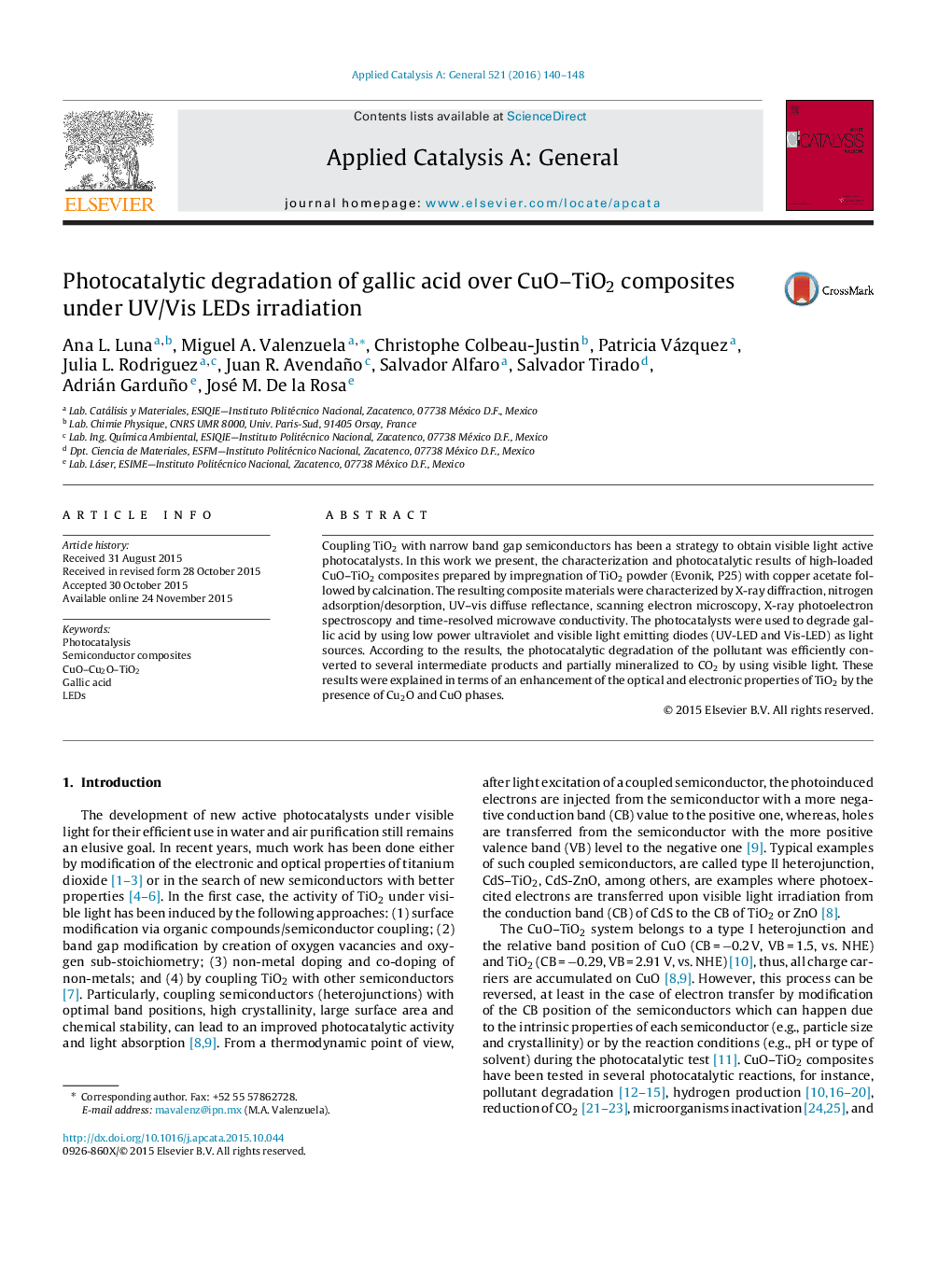| Article ID | Journal | Published Year | Pages | File Type |
|---|---|---|---|---|
| 38803 | Applied Catalysis A: General | 2016 | 9 Pages |
•Cu(II) ions impregnated on TiO2 produced CuO and Cu2O, after calcination at 400 °C.•Optical and electronic properties of TiO2 were improved in the presence of CuxO.•The highest photocatalytic activity was obtained with the 40 wt. CuO–TiO2 composite.•A reaction path of gallic acid photocatalytic degradation was proposed.
Coupling TiO2 with narrow band gap semiconductors has been a strategy to obtain visible light active photocatalysts. In this work we present, the characterization and photocatalytic results of high-loaded CuO–TiO2 composites prepared by impregnation of TiO2 powder (Evonik, P25) with copper acetate followed by calcination. The resulting composite materials were characterized by X-ray diffraction, nitrogen adsorption/desorption, UV–vis diffuse reflectance, scanning electron microscopy, X-ray photoelectron spectroscopy and time-resolved microwave conductivity. The photocatalysts were used to degrade gallic acid by using low power ultraviolet and visible light emitting diodes (UV-LED and Vis-LED) as light sources. According to the results, the photocatalytic degradation of the pollutant was efficiently converted to several intermediate products and partially mineralized to CO2 by using visible light. These results were explained in terms of an enhancement of the optical and electronic properties of TiO2 by the presence of Cu2O and CuO phases.
Graphical abstractA proposed scheme showing the photoredox processes during degradation of gallic acid (GA) in presence of Cu2O–CuO–TiO2 photocatalysts, air and visible light (LEDs).Figure optionsDownload full-size imageDownload high-quality image (73 K)Download as PowerPoint slide
